Each edition of the Venice Biennale is a celebration. For a period of five months, the floating city hosts the most iconic exhibition in the art world. Thousands of travelers visit the Serenissima to see country pavilions and enjoy the latest works of art and architecture proposals up close. The Venice Architecture Biennale 2023 was an exciting edition, and its title had an impact: The Laboratory of the Future.
I visited the Architecture Biennale in early October and was fascinated by its wealth of proposals. In this photo report, you will see several images I shot during my visit, accompanied by various info. As you can easily imagine, including every pavilion in the following lines is impossible. However, I intend to give you an overview of what was presented and how it feels to visit the Biennale and contribute some relevant info.
So, let’s begin with the Venice Architecture Biennale 2023 and the photos.
*Some links are affiliate links. It means that if you buy something, I might earn a small commission at no additional cost to you.
Photos from the Venice Architecture Biennale 2023
The main venues of the Venice Architecture Biennale 2023 were the Arsenale and the Giardini di Biennale. The Biennale took place between the 20th of May and the 26th of November. This year’s curator was Lesley Lokko, and the focus was on indigenous populations, sustainability, and proposals for rethinking the Biennale’s future. According to Lokko, “Africa is the laboratory of the future,” thus, the continent was the festival’s spotlight.
Let’s see now some photos from the pavilions.
The Nordic pavilion
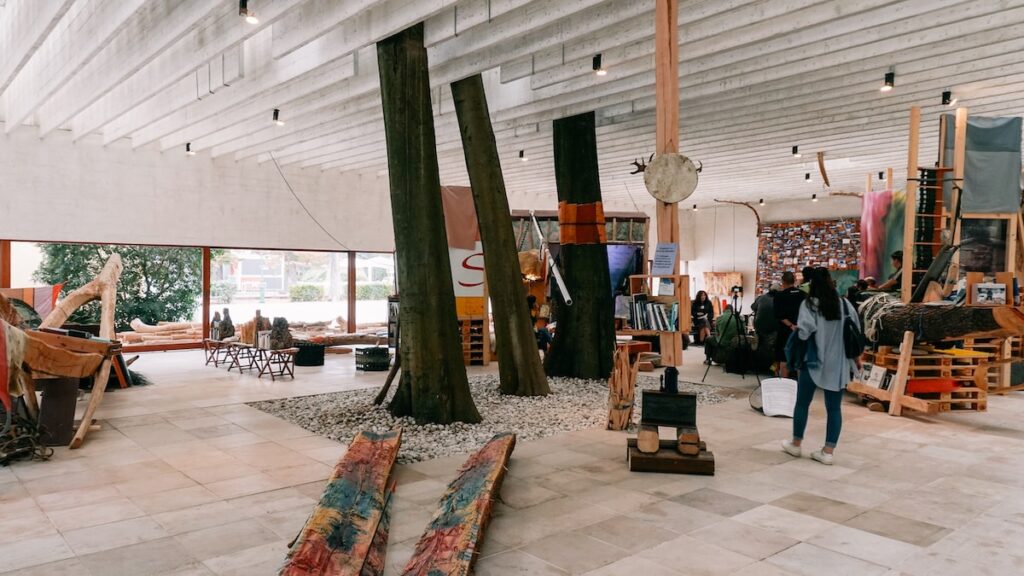
There was a strong focus on the indigenous Sami population at the participation of the Nordic countries -Finland, Norway, and Sweden. The “Girjegumpi: The Sámi Architecture Library” can be seen as a moving archive of more than 500 books, artworks, films, and tools.
The Japanese pavilion
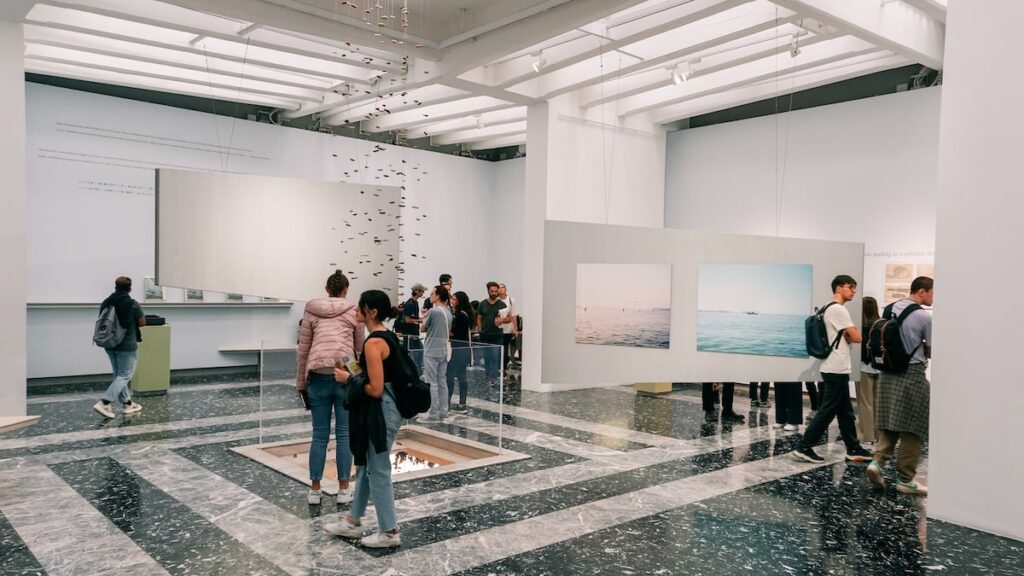
Japan’s pavilion was probably my favorite one. This year’s Japanese contribution somehow rethought the use of the pavilion itself. The title was “Architecture, a place to be loved.” It contained various stories and showed alternate and highly sustainable usage of the space.
And here’s some informational material:
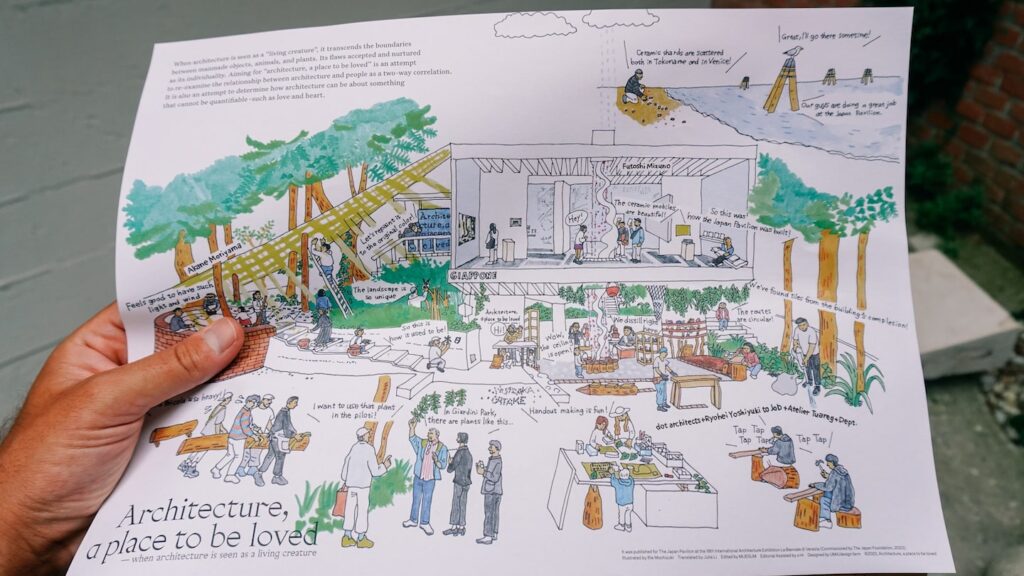
The Korean pavilion
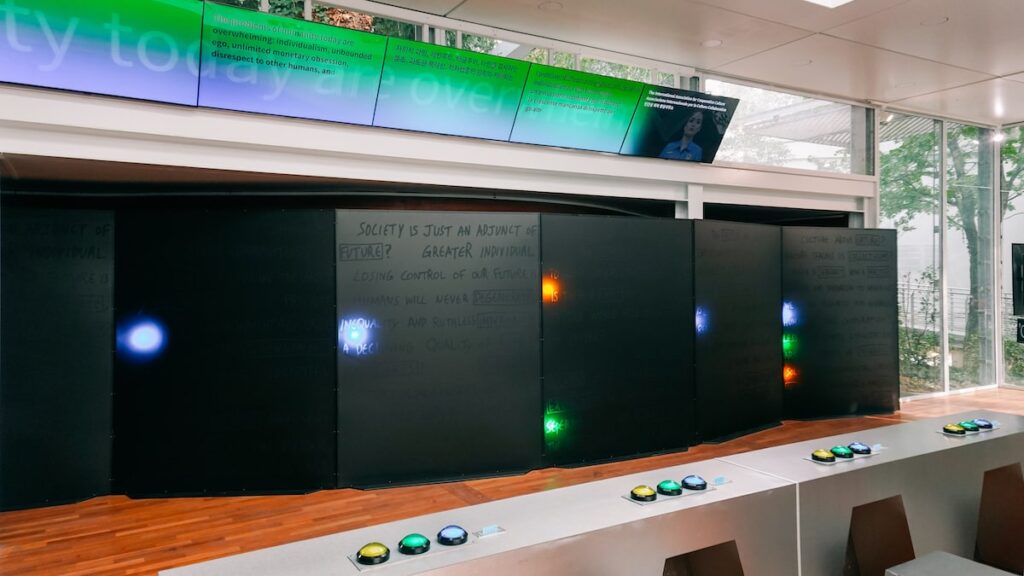
As a lover of science fiction, I was impressed by the Korean pavilion. Under the title, “2086: Together how?” the installation asks various questions about the environmental crisis and reflects on Earth’s condition in 2086. The artistic directors used the cases of small communities living and working in South Korea to set up the space.
Plus, an impressive exhibit:
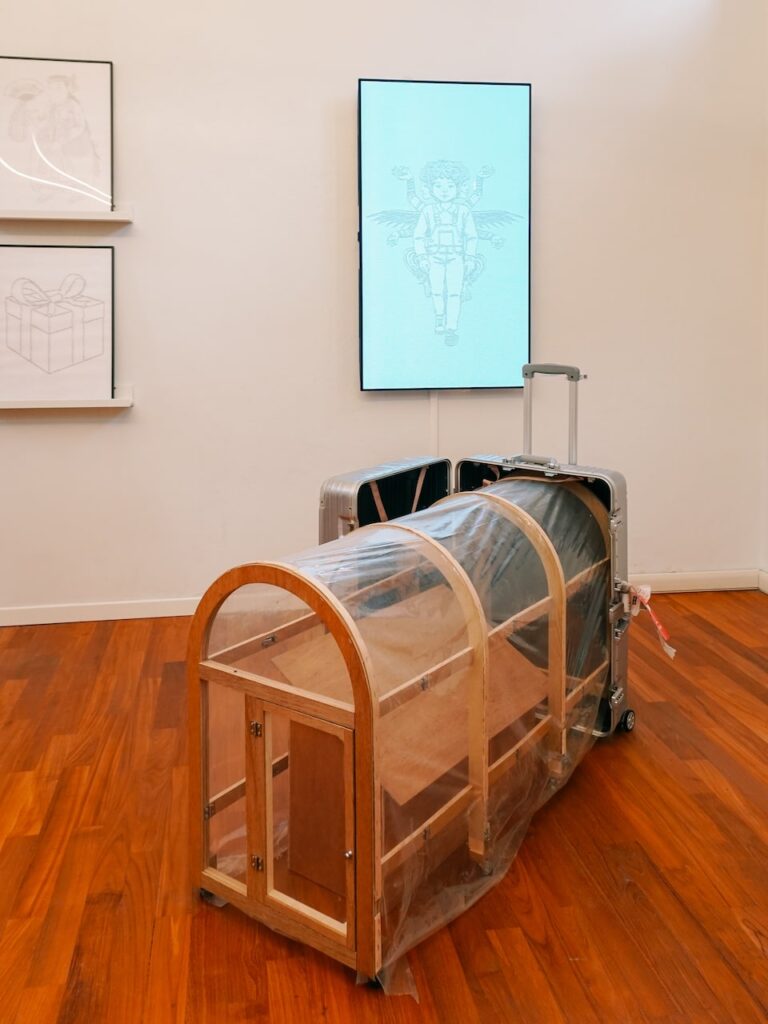
The German pavilion
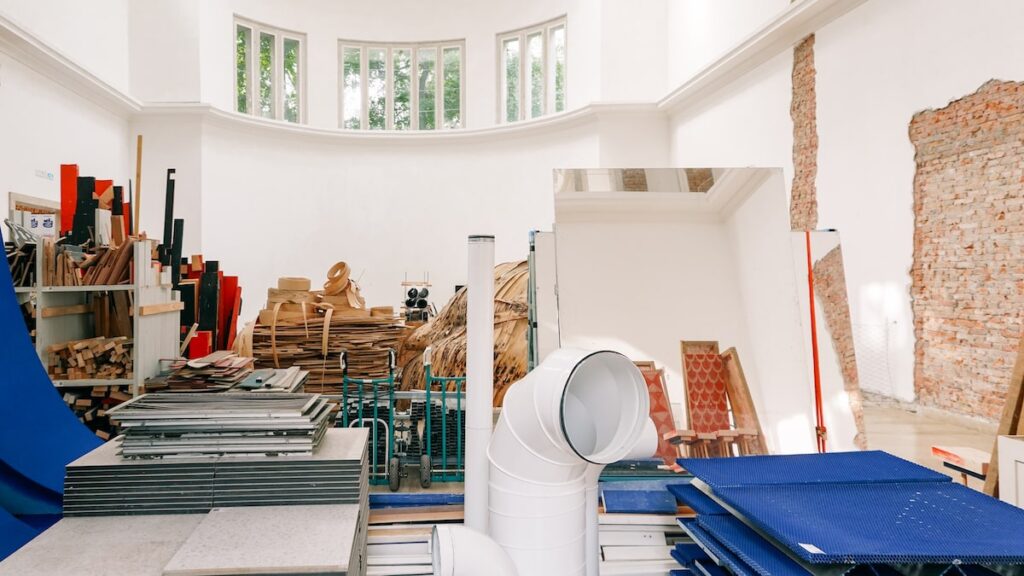
Germany’s participation was one of the most interesting I saw in Venice. In last year’s Arte Biennale 2022, artist Maria Eichhorn presented her work, “Relocating a Structure.” This year, this artwork is decomposed by a team, tributing the squats of the 80s in Berlin and showing the impact smaller communities can have.
You can also see the pavilion’s exterior:
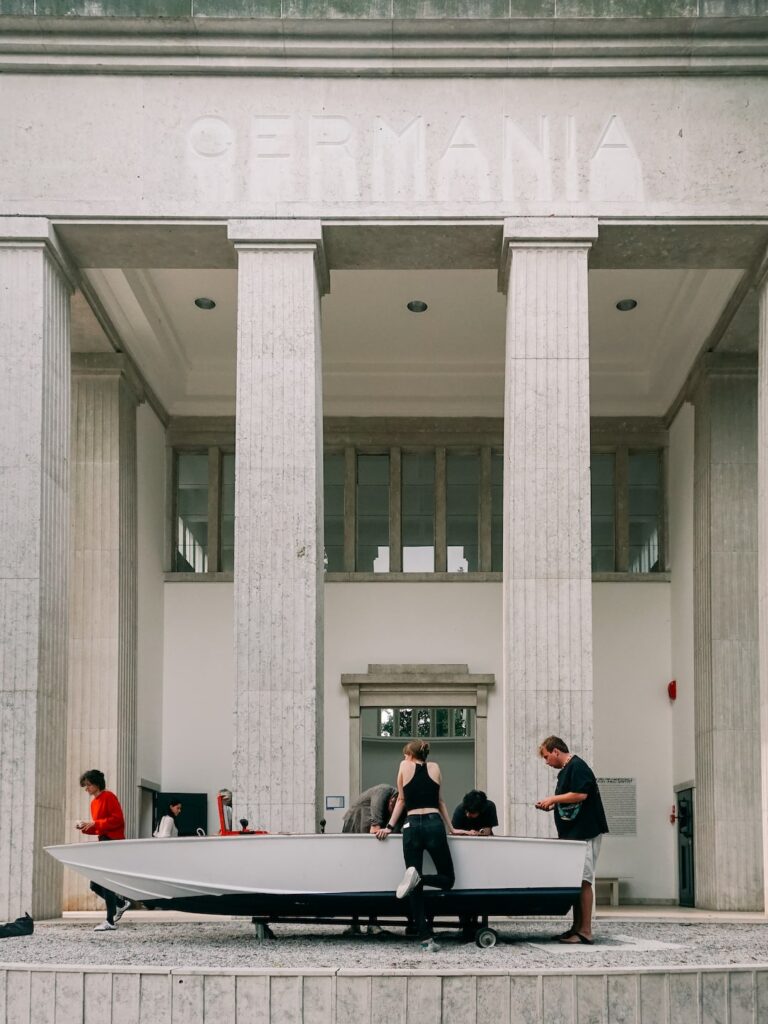
The Canada pavilion
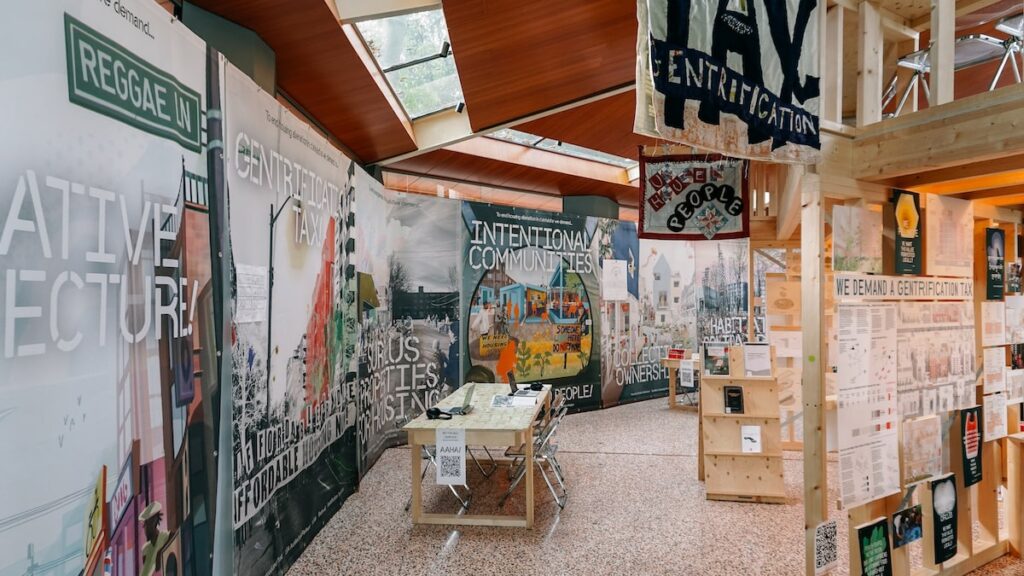
Under the title “Not for Sale,” the Canadian pavilion is about the housing crisis in Canada and the subsequent gentrification. Moreover, it’s about the extraction of local and indigenous populations due to real estate politics.
The British Pavilion
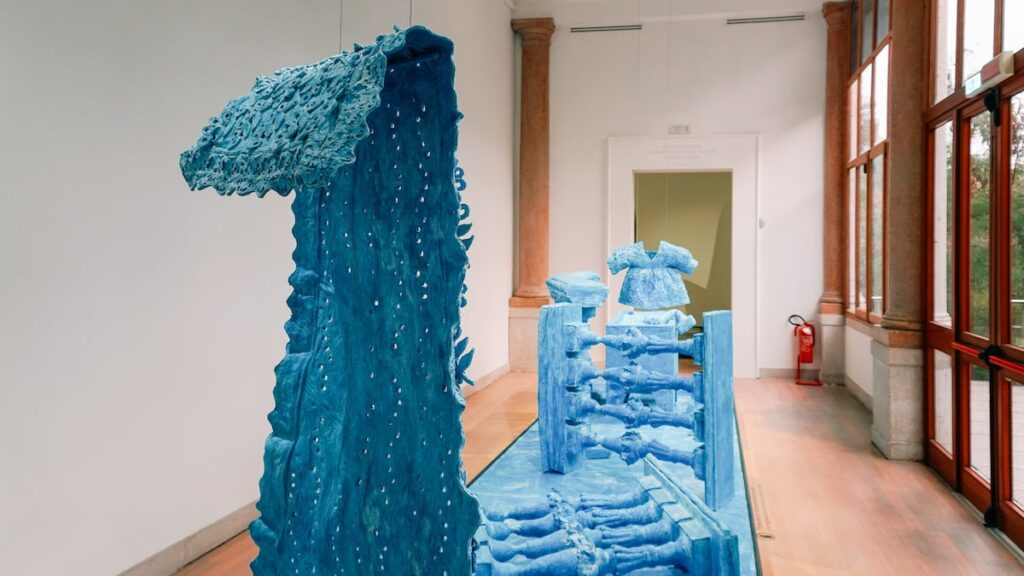
I was impressed by the work “Sabão Azul e Água” by Sandra Poulson. Poulson grew up in Luanda, Angola, and observed how dust covers the bodies and clothes of locals. She used dust and traditional blue soap (Sabão Azul) to investigate the city’s socioeconomic status and narrate hidden stories. This installation comprises four objects representing Luanda’s architectural vernacular and social traditions: “a cement tank used for hand-washing laundry, a colonial-era balustrade, a garment reminiscent of a traditional Angolan dress worn by women, and a footprint.”
The Australian pavilion
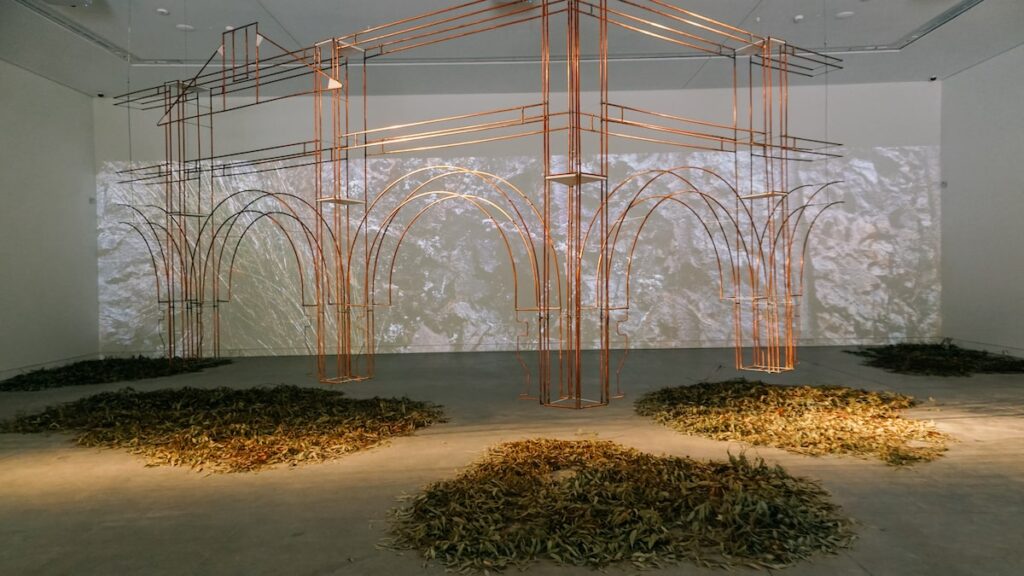
It was all about the former British Empire at the Australian pavilion, and everything seemed to be a comment on colonialism. The title was “Unsettling Queenstown,” and according to the directors, it’s a place that “unites decolonial theory and praxis.”
The Brazilian pavilion
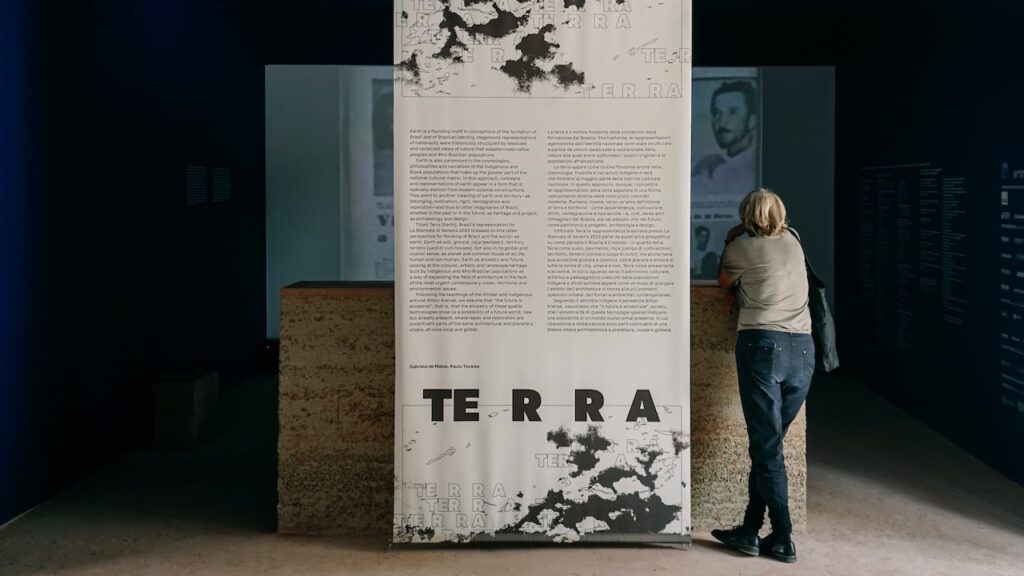
Brazil was one of the most interesting participants of this year’s Biennale and won the Golden Lion for Best National Participation. The pavilion focuses on the capital, Brasilia, and the impact its construction had on the indigenous population.
And one more photo from the interior:
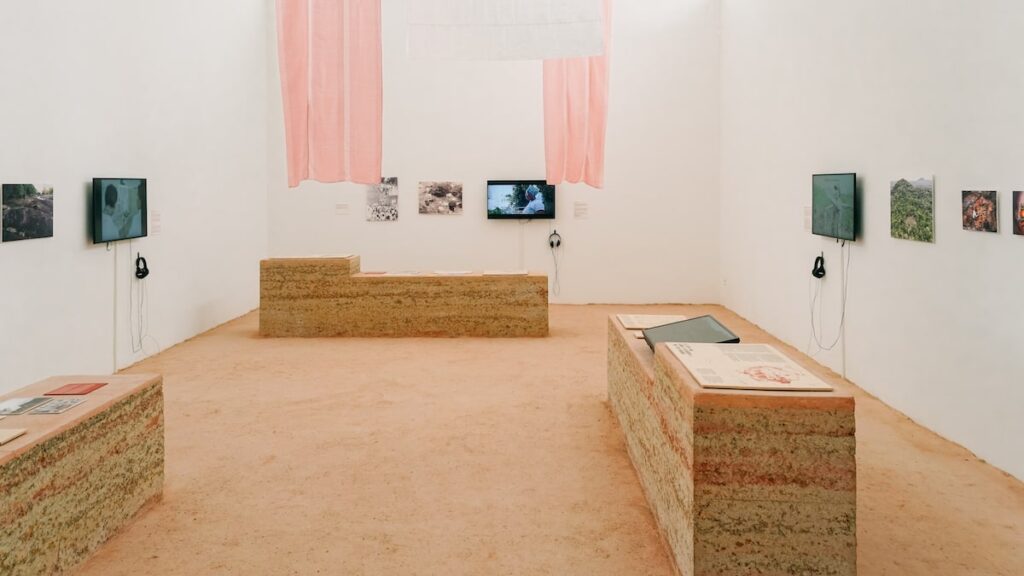
The Greek pavilion
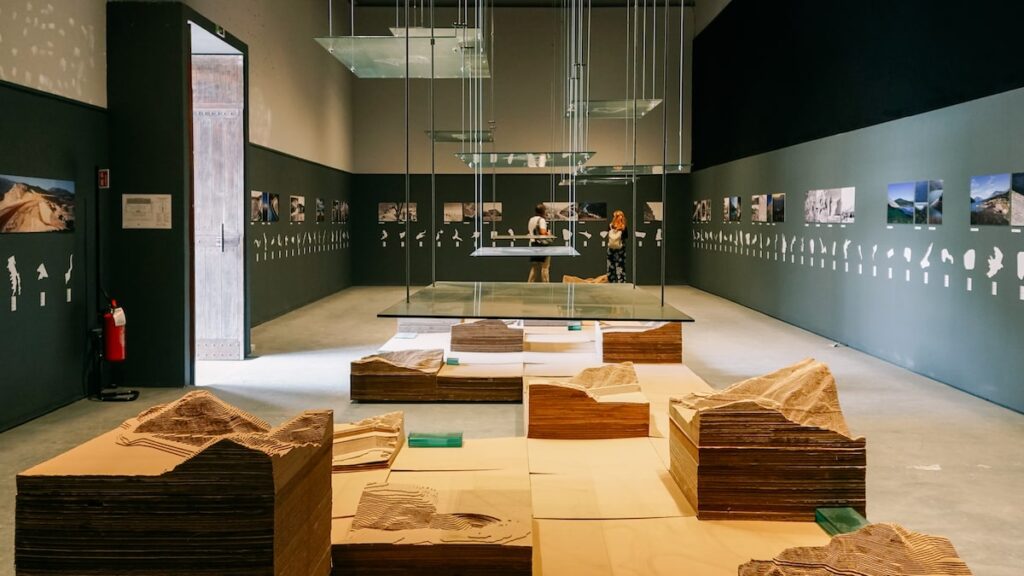
In the Biennale 2023, Greece participated in an exploration of the country’s reservoirs and how they transform and participate in the landscape. As a Greek, I found the installation impressive, and I also enjoyed the sounds of chirping birds and barking dogs, which contributed to the rural Greek atmosphere.
The Austrian pavilion
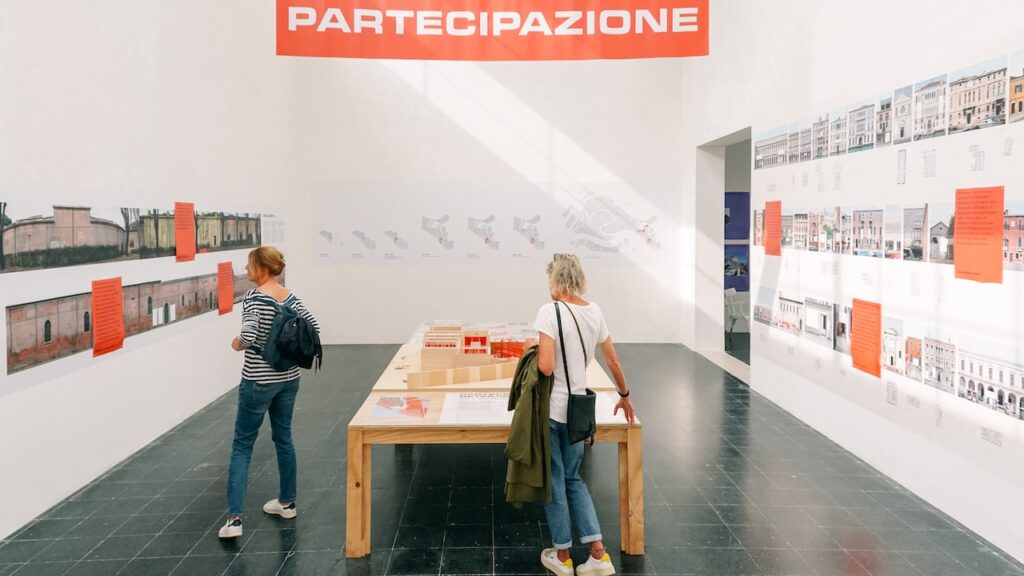
Finally, the Austrian pavilion was among the most interesting ones because it questioned the existence and the future of the Venice Biennale itself. It was impressive to see how the Biennale has impacted and transformed the entire city of Venice throughout the years. The main idea was to discuss a rejected pavilion proposal by the Biennale, and this sparked a whole exploration of the festival’s present and future.
And one more photo from Austria’s participation:
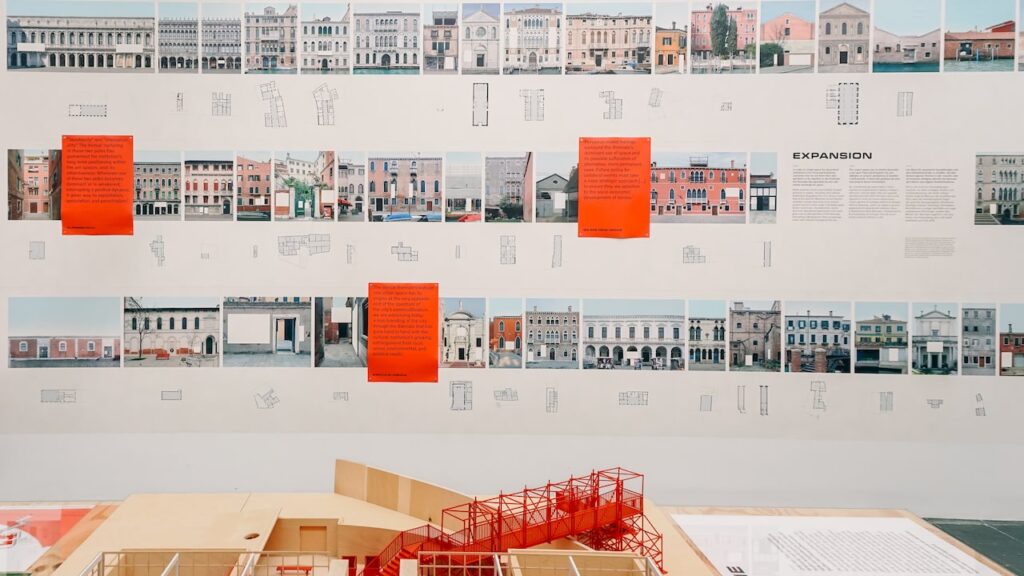
The US Pavilion
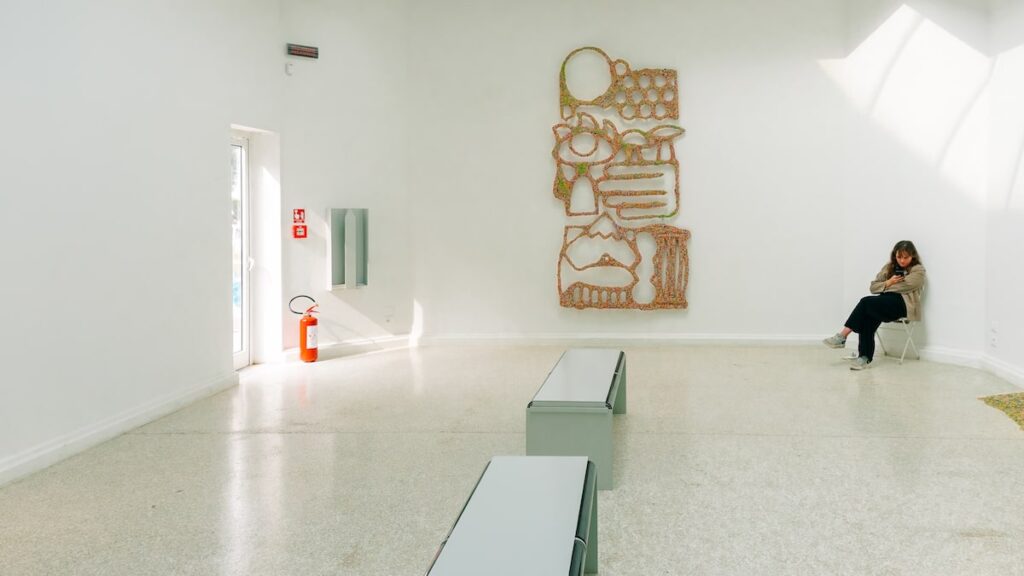
At the US pavilion, everything was about the impact of plastic on our ecosystem. Rethinking the usage of plastic due to its extended lifetime becomes a cornerstone question for the planet’s survival.
Various impressions from the Venice Architecture Biennale 2023
In this subsection, you will see some random impressions from the Venice Architecture Biennale 2023. The intention is to give you an idea of how it feels to visit the Biennale and explore the Giardini premises.
First of all, this art-loving seagull that photobombed one of my photos.
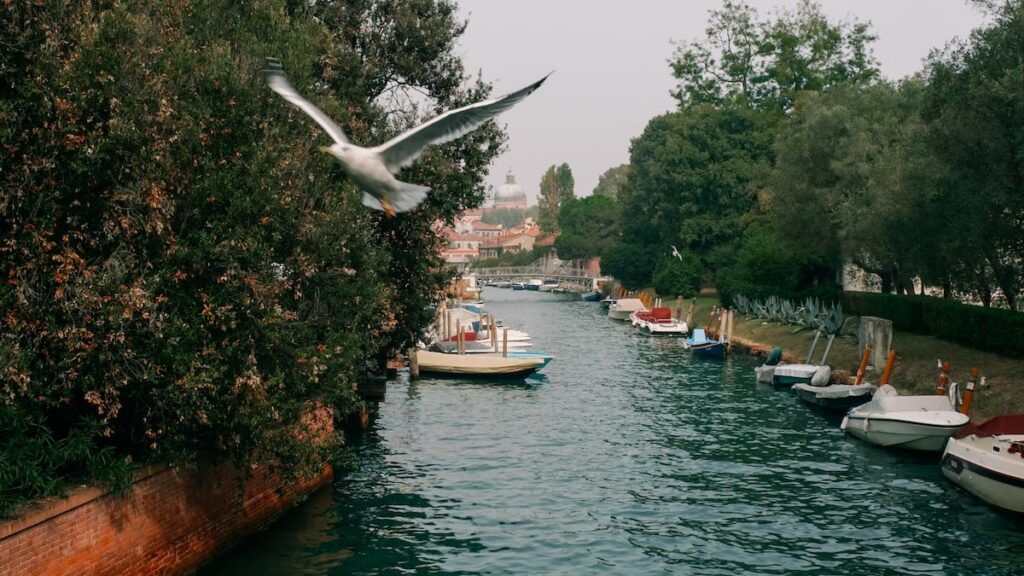
The Biennale can easily exhaust you, so make sure to find a nice spot to rest.
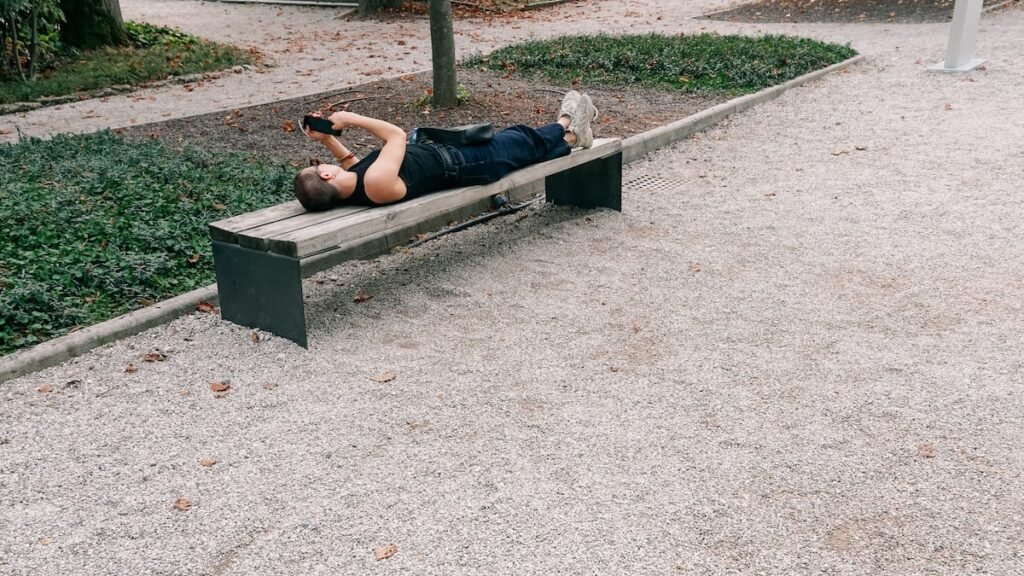
The Giardini di Biennale is a really beautiful place to wander.

And here’s the view toward the Venetian Lagoon on a foggy day.
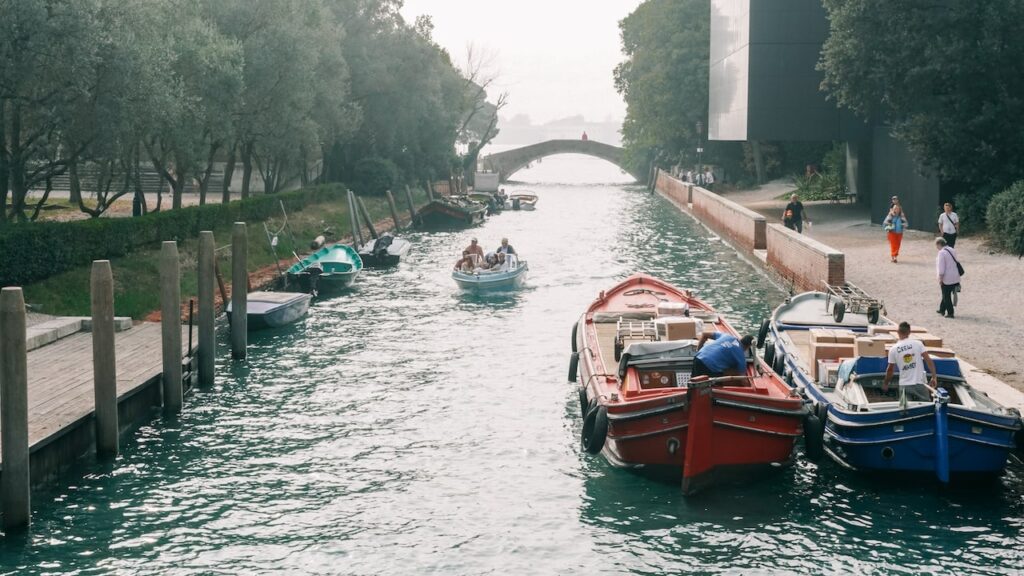
I was exhausted when I visited the pavilion of Belgium, but I managed to shoot one photo.
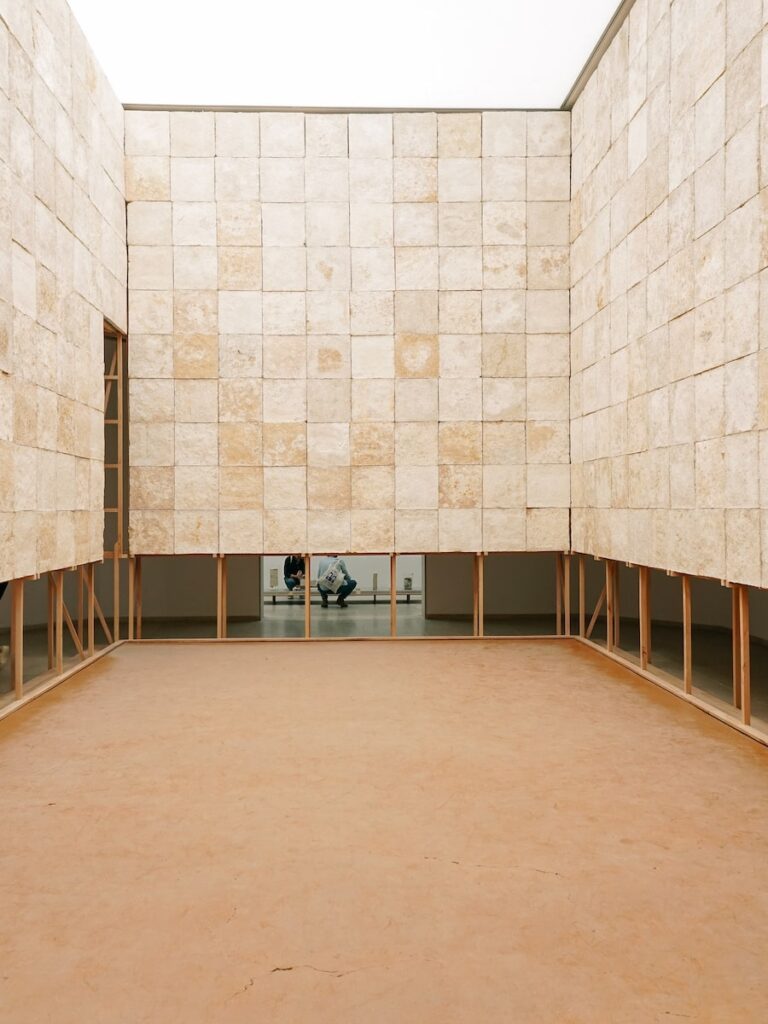
Shortly after the exit, you’ll find Paradiso, a fancy cafe-restaurant that serves delicious food. It’s a bit pricey, but I recommend a stop after a long day at the Venice Biennale.
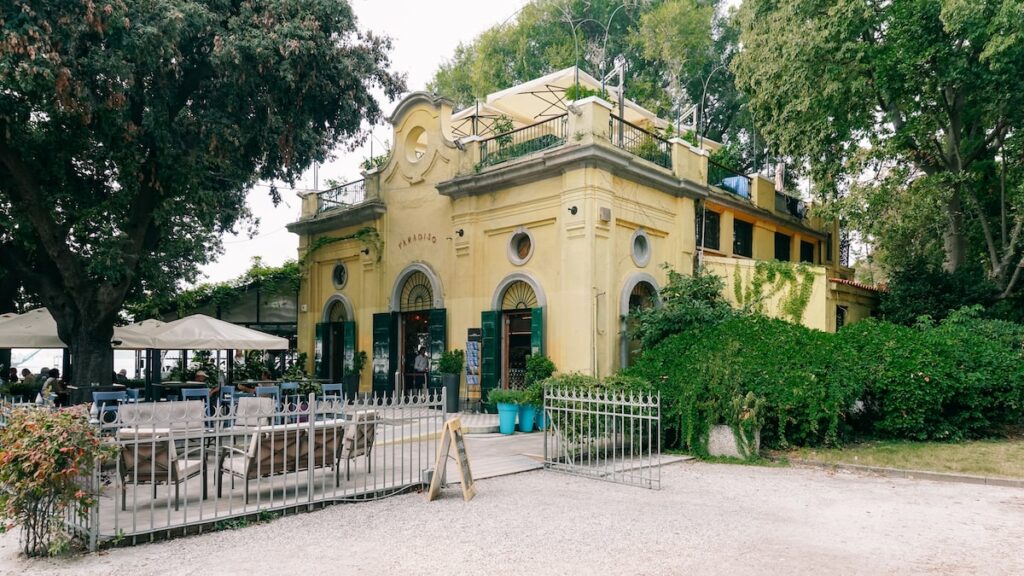
Biennale practical info
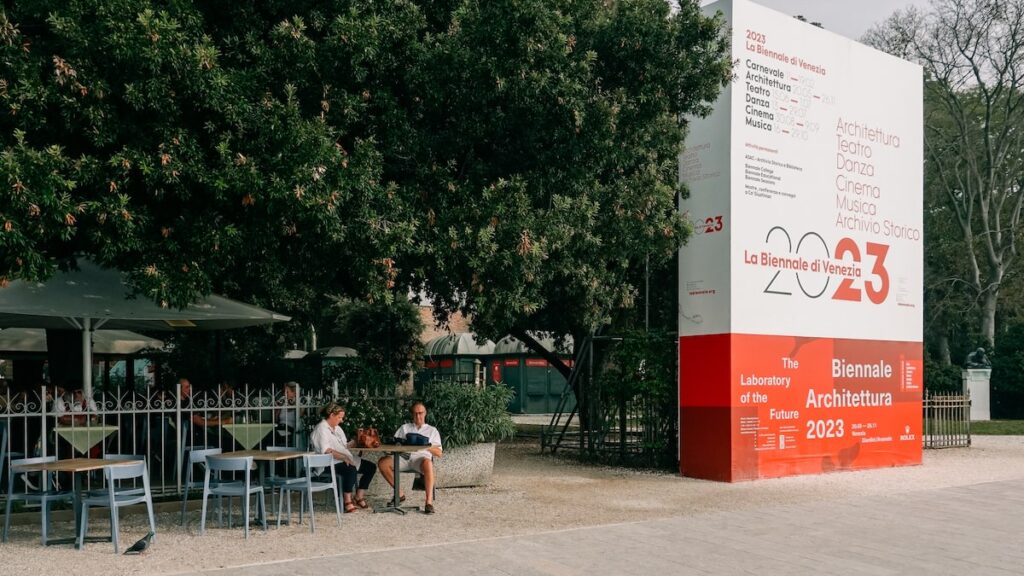
To get more information about the Biennale, you can visit the festival’s official website, where you can buy online your Biennale tickets.
Although the main venues are two -Arsenale and Giardini- several other locations around the city host various events. Depending on the time of your visit, you might have the opportunity to see the places hosting such events. Therefore, make sure to visit the Biennale website above to find out what else is currently on show.
If you’d like to prepare for an upcoming visit to the Biennale, you can see the entrances of the main venues on Google Maps. You can find the Arsenale entrance here and the Giardini entrance here.
Venice Architecture Biennale conclusion
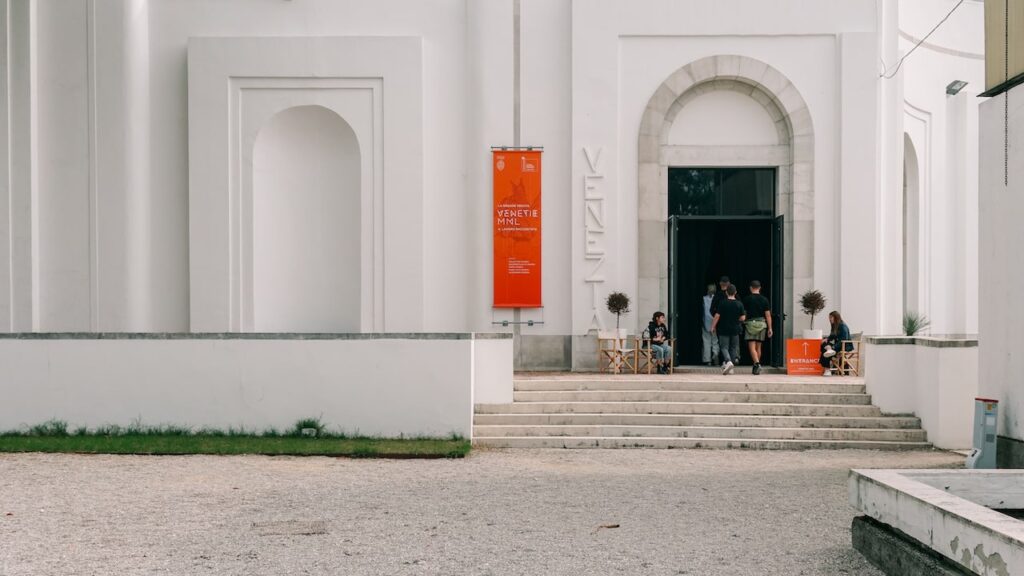
Visiting the Biennale is a fascinating experience. Apart from being hosted in a marvelous city, the Biennale is the place to see contemporary art and architecture. Although you should be prepared for some tiring -if not exhausting days- due to the walks and impressions, it’s an experience I highly recommend to people with genuine interest in the world surrounding us.
As you saw in the images above, the questions posed in the Biennale premises are intriguing -and so are some of the answers. Centered around sustainability, diaspora, indigenous populations, and future projects, the Venice Architecture Biennale 2023 exceeded my expectations. Therefore, if you have the opportunity to visit Venice during the Biennale, don’t miss it: it’s a fantastic experience that will definitely have an impact on you.
More about Venice: Venice gondola ride, The ultimate Vaporetto guide, Lido travel guide
Pin it for later
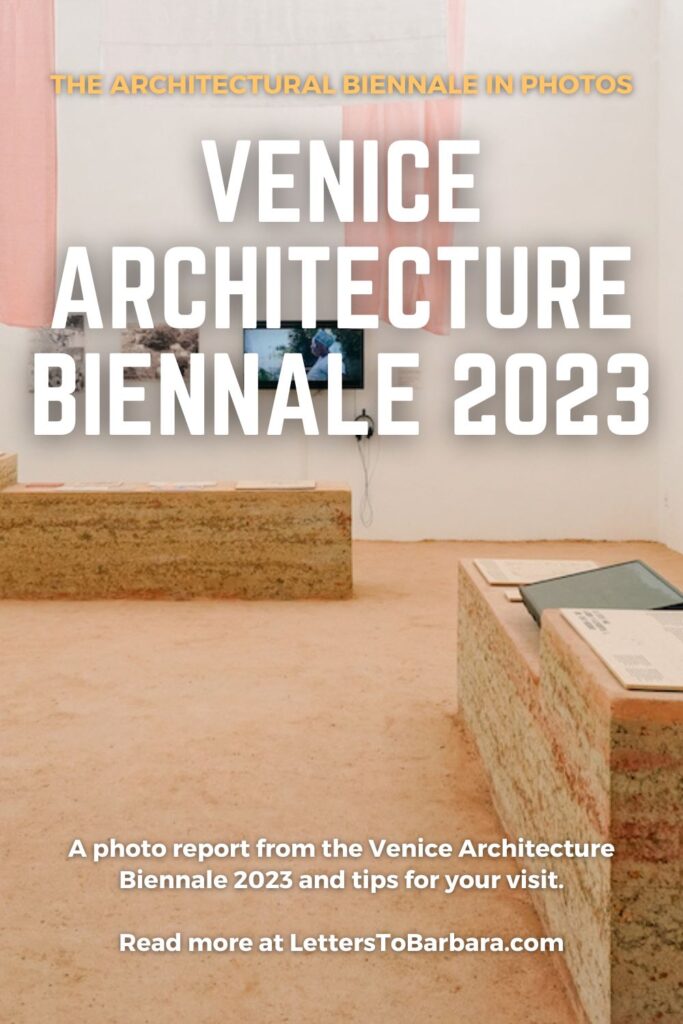
Sharing is caring. Share this article about the Architectural Biennale of Venice with your friends.
Last Updated on December 16, 2023 by George Pavlopoulos


Hi George
I’ve visited the Venice Arte Biennale several times and have always found it very inspiring. Unlike the Architecture version there are many small galleries and even churches that take part throughout the city with some fantastic installations. San Georgia Maggiore has a couple of quite large installations, and there’s numerous outdoor installations around the canals. There’s also the pavilions in Giardini.
Must get back there soon!
Nick
Hey Nick!
Oh, this sounds wonderful! I haven’t been to the Venice Arte Biennale and still wonder how I let this happen! I wish I had more time in Venice because I’d love to visit some pavilions more than once. Anyway, as you mentioned, it is very inspiring to stroll around the pavilions and see what every country contributes. I’ll do my best to revisit Venice next year for the Arte Biennale.
Take care,
George